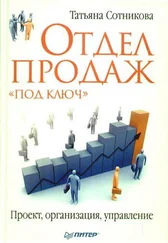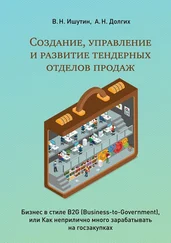Earl D. Honeycutt and Thomas H. Stevenson, Evaluating Sales Training Programs. Industrial Marketing Management (август 1989). С. 215–222. См. также Fernando Jaramillo, Francois A. Carrillat, and William B. Locander. A Meta-Analytic Comparison of Managerial Ratings and Self-Evaluations. Journal of Personal Selling & Sales Management 25 (осень 2005). С. 315–328.
Powers, Thomas L., Thomas E. DeCarlo, Gouri Gupte. An Update on the Status of Sales Management Training. Journal of Personal Selling & Sales Management 30 (осень 2010). С. 319–326; Beverly Geber. Does Training Make a Difference? Prove It! Training (март 1995). С. 27–34.
Rick Mendoza. There’s a Payoff? Sales & Marketing Management (июнь 1995). С. 64–71.
Там же. С. 69.
Xin Liang, Sibin Wu, and Joo Y. Jung. Recoupling Compensation-Performance Relationships: A Mediating Role of Performance. International Journal of Human Resources Development and Management 9, № 4 (2009). С. 317–333.
Leslie M. Fine and Janice R. Franke. Legal Aspects of Salesperson Commission Payments: Implications for the Implementation of Commission Sales Programs. Journal of Personal Selling & Sales Management (зима 1995). С. 53–68.
Joanna L. Y. Ho, Anne Wu, and Ling-Chu Lee. How Changes in Compensation Plans Affect Employee Performance, Recruitment, and Retention: An Empirical Study of a Car Dealership. Contemporary Accounting Research 4 (весна 2009). С. 167–199.
Arun Sharma. Customer Satisfaction-Based Incentive Systems: Some Managerial and Salesperson Considerations. Journal of Personal Selling & Sales Management (весна 1997). С. 61–70.
Joel Silver. Building an Effective Sales Incentive Program, аwww.saleslobby.com, январь 2002.
Тот же источник; Audrey Bottjen. Incentives Gone Awry. Sales & Marketing Management (май 2001). С. 72.
Karen Renk. The Age-Old Question: Cash vs. Merchandise? Occupational Health and Safety (сентябрь 2002). С. 60–62.
Тот же источник.
Mark McMaster. Personalized Motivation, Sales & Marketing Management (май 2002). С. 16.
Soumaya Ben Letaifa and Jean Perrien. The Impact of E-CRM on Organizational and Individual Behavior: THe Effect of the Remuneration and Reward System, International Journal of E-Business Research 3 (апрель – июнь 2007). С. 13–21.
Arun Sharma and Dan Sard. The Impact of Customer Satisfaction-Based Incentive Systems on Salespeople’s Customer Service Response: An Empirical Study. Journal of Personal Selling & Sales Management (лето 1995). С. 17–29.
HR Chally Group. The Great Business Challenges of the New Millennium. Dayton, OH: HR Chally Group, 2007.
S. Scott Sands. Ineffective Quotas: The Hidden Threat to Sales Compensation Plans. Compensation and Benefits Review 32 (март – апрель 2000). С. 35–42.
Kemba J. Dunham. Back to Reality: To Lure Workers, Dot-Coms Are Having to Focus on Something Besides Options, Such as Salaries. The Wall Street journal (апрель, 12, 2001). С. R5.
Robert Dwyer and John F. Tanner, Jr. Business Marketing: Connecting Strategy, Relationships, and Learning (New York: McGraw-Hill 2002); HR Chally Group. The Great Business Challenges of the New Millenium. Dayton, OH: HR Chally Group, 2007. С. 7.
Kissan Joseph. On the Optimality of Delegating Pricing Authority to the Sales Force, Journal of Marketing (январь 2001). С. 62–70. См. также David Jobber, Graham J. Hooley, and David Shipley. Organizational Size and Salesforce Evaluation Practices. Journal of Personal Selling & Sales Management 13 (весна 1993). С. 37–48; Birendra K. Mishra and Ashutosh Prasad. Centralized Pricing versus Delegating Pricing to the Salesforce under Information Asymmetry. Marketing Science 23 (зима 2004). С. 21–27.
Matsuo, Makoto. The Influence of Sales Management Control on Innovativeness of Sales Departments. Journal of Personal Selling & Sales Management 29 (осень 2009). John J. Wheatley. The Allocation Controversy in Marketing Cost Analysis. University of Washington Business Review (лето 1971). С. 61–70.
Sanford R. Simon. Managing Marketing Profitability. New York: American Management Association, 1969. С. 37. Всем студентам, которые интересуются углубленным изучением анализа затрат, следует прочитать эту классическую книгу по маркетинговому анализу прибыльности. Эта работа наглядно иллюстрирует процесс составления маркетингового анализа затрат и самого анализа. См. также Robin CooDer and Robert S. Kaplan. Profit Priorities from Activity-Based Costing. Harvard Business Review 69 (май – июнь 1991). С. 130–135.
Simon. Managing Marketing Profitability , с. 37–38.
Gayle Rayburn. Accounting Fools in the Analysis and Control of Marketing Performance. Industrial Marketing Management 6 (1977). С. 175–182.
Пример см. Simon. Managing Marketing Profitability; Charles H. Sevin. Marketing Productivity Analysis. (New York: McGraw-Hill, 1965; L. Gayle Rayburn. Financial Tools for Effective Marketing Administration. New York: American Management Association, 1976; Neil Dorward. Pricing: Formula to Tame Those Wayward Costs. Accountancy 95 (ноябрь 1984). С. 101–104; Robin Cooper and Robert S. Kaplan. Measure Costs Right: Make the Right Decision. Harvard Business Review 66 (сентябрь – октябрь 1988). С. 96–103.
Daniel J. Goebel, Greg W. Marshall, and William B. Locander. Activity Based Costing: Accounting for a Market Orientation. Industrial Marketing Management 27 (ноябрь 1998). С. 497–510; David Bukovinsky. Hans Sprohge, and John Talbott, Activity-Based Costing for Sales and Administrative Costs: A Case Study. The CPA Journal 70 (апрель 2000). С. 70–72.
Информация о сегментах, которые часто используются в маркетинговом анализе затрат, см. Donald W. Jackson and Lonnie L. Ostrom. Grouping Segments for Profitability Analysis. MSU Business Topics 28 (1980). С. 39–44. См. также Robin Cooper and Robert S. Kaplan. Activity-Based Systems: Measuring the Cost of Resource Usage. Accounting Horizons 6 (сентябрь 1992). С. 1–13. Другой метод разделения дохода (покупателей) на сегменты: см. информацию об анализе в Dwyer and Tanner. Business Marketing, глава 5.
Читать дальше
Конец ознакомительного отрывка
Купить книгу












